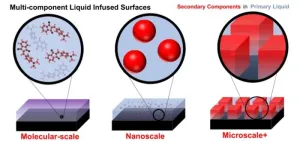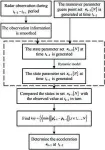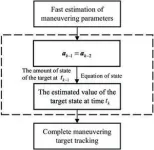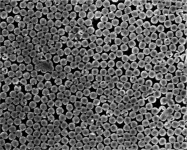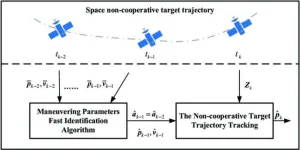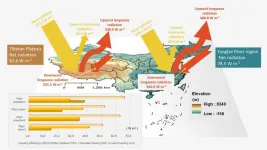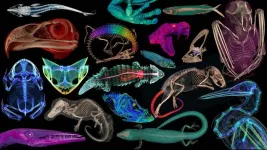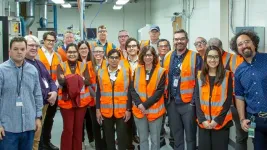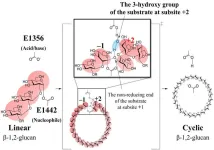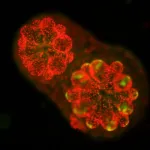Revolutionizing surface technology: Introducing multi-component liquid-infused surfaces for adaptive and functional coatings
2024-03-06
(Press-News.org)
Surface coatings have long been essential in various industries, offering protection and functionality. In recent years, liquid-infused surfaces (LIS) have emerged as a groundbreaking technology, revolutionizing how we approach surface coatings. In a review article recently published in Industrial Chemistry & Materials on Feb. 23, 2024, authors Zachary Applebee and Dr. Caitlin Howell explore a novel approach in surface technology that could significantly impact various industries, including healthcare and environmental conservation. A new frontier is emerging: multi-component liquid-infused systems, or LIS containing more than one component in the liquid. The research introduces the concept of multi-component liquid-infused surfaces as a sophisticated advancement beyond the single-component liquid coatings that have dominated the field since their inception in the early 2010s.
These innovative multi-component surface coatings don't just have one purpose; they are designed to be dynamic, capable of actively responding to their environment by incorporating multiple elements into the liquid layer. This versatility allows for a myriad of applications, from medical devices that both passively and actively combat infection to advanced carbon-capture systems and chemical delivery mechanisms controlled by magnetic fields.
"In this review, we explore the untapped potential of multi-component liquid-infused surfaces," explains Zach Applebee, a graduate researcher at the University of Maine. "By integrating various elements into the liquid coating, we can achieve synergistic effects that enhance functionality in ways previously thought impossible. This opens up new avenues for innovation in both industry and medicine."
The study categorizes these surfaces based on the size of their secondary components, ranging from molecular to microscale, and presents examples demonstrating how the inclusion of additional elements can lead to groundbreaking advancements. The review not only highlights the diversity of fabrication methods but also sets the stage for future research directions in this promising field. "The most important message in our review is that the liquid nature of liquid-infused coatings is a game-changer in creating surfaces that adapt and respond," explains Caitlin Howell, a professor at the University of Maine. "By leveraging the natural processes of liquids, such as diffusion, flow, and return to equilibrium, we can begin to design systems that dynamically move or place secondary materials, whether molecules, nanoparticles, or even other immiscible liquids, exactly where we want, when we want. The possibilities are endless."
The researchers are optimistic about the future of this technology. They believe that as more scientists and engineers become aware of the possibilities offered by multi-component liquid-infused surfaces, a wave of innovation will follow, leading to the development of materials and systems that could significantly improve our quality of life and address some of the world's most pressing challenges.
"We believe that multi-component liquid-infused surfaces are well positioned to begin to address a wide range of problems once more researchers become aware of them," says Dr. Howell, "and could be instrumental in designing new highly targeted drug-delivery systems or creating industrial surfaces that can adapt to different types of foulants in real-time."
Industrial Chemistry & Materials is a peer-reviewed interdisciplinary academic journal published by Royal Society of Chemistry (RSC) with APCs currently waived. Icm publishes significant innovative research and major technological breakthroughs in all aspects of industrial chemistry and materials, especially the important innovation of the low-carbon chemical industry, energy, and functional materials.
END
ELSE PRESS RELEASES FROM THIS DATE:
2024-03-06
Evaporation is a natural process so ubiquitous that most of us take it for granted. In fact, roughly half of the solar energy that reaches the earth drives evaporative processes. Since 2017, researchers have been working to harness the energy potential of evaporation via the hydrovoltaic (HV) effect, which allows electricity to be harvested when fluid is passed over the charged surface of a nanoscale device. Evaporation establishes a continuous flow within nanochannels inside these devices, which act as passive pumping mechanisms. This effect is also seen in the microcapillaries of plants, where ...
2024-03-06
Firstly, the authors briefly describe two models for tracking the maneuvering trajectories of non-cooperative space targets: the relative dynamics model and the indirect measurement model. In the relative dynamics model, tracking the maneuvering trajectory of the target is modeled as a problem of tracking the target's position over short discrete time intervals. On the other hand, the indirect measurement model transforms radar-derived values directly into measurements in the Local Vertical Local Horizontal (LVLH) coordinate system.
Next, the authors address the tracking problem of targets ...
2024-03-06
Land–atmosphere interactions play a crucial role in shaping Earth’s climate system, profoundly influencing weather patterns, climate variables, and ecological processes. Despite being located at similar latitude, the Tibetan Plateau (TP) and Yangtze River region (YRR) represent two distinct climate zones, garnering significant attention in this field. The former, situated in western China at an altitude exceeding 4000 m, is characterized by an arid climate, whereas the latter, located in the eastern Chinese plain, experiences a humid climate. Although both the TP and YRR have ...
2024-03-06
Spinal muscular atrophy, or SMA, is the leading genetic cause of infant death. Less than a decade ago, Cold Spring Harbor Laboratory (CSHL) Professor Adrian Krainer showed this brutal disease can be treated by tweaking a process called RNA splicing. This breakthrough resulted in Spinraza, the first effective treatment for SMA. It also opened a new frontier in drug development. Now, CSHL research could push RNA-splicing drugs even further. CSHL Associate Professor Justin Kinney, Krainer, and postdoc Yuma Ishigami have ...
2024-03-06
Read the online version (Available 8:00 a.m. ET, March 6, 2024)
Watch the video (Embargoed. Do not distribute before 8:00 a.m. ET, March 6, 2024)
Natural history museums have entered a new stage of scientific discovery and accessibility with the completion of openVertebrate (oVert), a five-year collaborative project among 18 institutions to create 3D reconstructions of vertebrate specimens and make them freely available online.
Researchers published a summary of the project in the journal BioScience in which they review the specimens that have been scanned to date and offer a glimpse of how the data might be used to ask new questions ...
2024-03-06
More than 120 people gathered for the 2024 Innovation Network for Fusion Energy (INFUSE) Workshop at the U.S. Department of Energy’s (DOE) Princeton Plasma Physics Laboratory (PPPL) from Feb. 27-28.
The event, which was sponsored by the DOE’s Office of Fusion Energy Sciences (FES), is a part of the INFUSE awards program that funds laboratories or universities so they can partner with private sector companies working on the science and technology ...
2024-03-06
The polysaccharide β-1,2-glucan consists of repeating units of glucose linked together by β-1,2-glycosidic bonds. Cyclic β-1,2-glucans (CβGs) occur in different bacterial species and have a role in bacterial infections and symbiotic relationships. CβG biosynthesis is catalyzed by cyclic β-1,2-glucan synthase (CGS), an enzyme that catalyzes the cyclization (closed ring formation) of linear β-1,2-glucan (LβG).
Since the method for large-scale enzymatic synthesis of linear β-1,2-glucan has already been established, combining it with this enzyme is technically feasible for efficient ...
2024-03-06
Scientists have discovered the gene that enables marine algae to make a unique type of chlorophyll. They successfully implanted this gene in a land plant, paving the way for better crop yields on less land.
Finding the gene solves a long-standing mystery amongst scientists about the molecular pathways that allow the algae to manufacture this chlorophyll and survive.
“Marine algae produce half of all the oxygen we breathe, even more than plants on land. And they feed huge food webs, fish that get eaten by mammals and humans,” said UC Riverside ...
2024-03-06
Patients kept asking a question that Nathan Lo, MD, PhD, infectious disease specialist, had a hard time answering: How often should I get my booster shot for COVID-19?
“It’s a question that we have all asked. My patients have asked; friends and family members have asked,” Lo said. “We point to the national vaccine recommendations, although increasingly this question has become challenging to answer. I didn’t quite have the estimates on hand that I might hope to share with patients.”
To build that evidence, Lo and his team at Stanford ...
2024-03-06
XPANCEO, a deep tech company developing the first smart contact lenses with XR vision, health monitoring, and content surfing features, in collaboration with the Nobel laureate Konstantin S. Novoselov (National University of Singapore, University of Manchester) and professor Luis Martin-Moreno (Instituto de Nanociencia y Materiales de Aragon), has announced in Nature Communications a groundbreaking discovery of new properties of rhenium diselenide and rhenium disulfide, enabling novel mode of light-matter interaction with huge potential for integrated photonics, healthcare, and AR. Rhenium disulfide ...
LAST 30 PRESS RELEASES:
[Press-News.org] Revolutionizing surface technology: Introducing multi-component liquid-infused surfaces for adaptive and functional coatings
